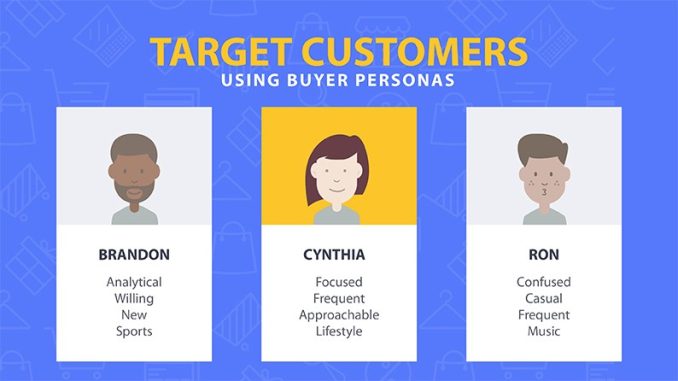
Customer personas are not just marketing buzzwords; they are powerful, semi-fictional representations of your ideal customers, built on real data and educated speculation about demographics, behaviors, motivations, and goals. In an increasingly competitive landscape, where understanding your customer is paramount, personas serve as invaluable strategic tools, moving businesses beyond generic assumptions to a precise, empathetic view of who they are trying to reach. Merely creating them, however, is not enough; the true magic happens when these detailed portraits are actively integrated into every facet of your business strategy, transforming abstract data into actionable insights that drive growth and foster deeper customer relationships.
The journey of leveraging customer personas in your strategy begins with their **creation, grounded in rigorous research**. This isn’t an exercise in imagination but a data-driven process. Start by collecting qualitative and quantitative information from various sources: interviews with existing customers, sales teams, and customer service representatives; website analytics; CRM data; social media insights; and market research reports. Look for patterns in demographics, behavioral tendencies, pain points, aspirations, and communication preferences. For instance, if you’re a software company, your research might reveal that one segment of your users, “Tech-Savvy Startup Founders,” are motivated by efficiency and scalability, prefer concise video tutorials, and are active on LinkedIn. Another segment, “Established Corporate Managers,” might prioritize security and compliance, prefer detailed whitepapers, and attend industry webinars. These distinctions are crucial. A well-crafted persona breathes life into this data, giving your target audience a name, a face, and a compelling story, allowing your team to empathize and connect on a human level.
Once personas are developed, the first major strategic integration point is **product development and innovation**. Personas act as a constant North Star, ensuring that new features, services, or products are designed with the end-user firmly in mind. Instead of building something because “we think it’s a good idea,” teams can ask: “Would ‘Sarah, the Busy Small Business Owner,’ find this feature valuable? Does it solve a genuine pain point for her?” This perspective shifts development from an internal, product-centric view to an external, customer-centric one. For example, if your “Sarah” persona struggles with complex onboarding processes, the product team can prioritize intuitive interfaces and simplified setup flows. If your “David, the Enterprise IT Director,” persona values robust integrations, then API development becomes a key focus. This direct link between persona needs and product roadmap minimizes wasted resources on features nobody wants and accelerates the creation of solutions that truly resonate with your target market.
Beyond product, personas are instrumental in shaping your **marketing and communication strategies**. They dictate not just *what* messages you create, but *how, where, and when* those messages are delivered. Understanding a persona’s preferred communication channels, their daily routines, and the language they use allows for highly targeted and effective campaigns. If “Sarah” spends her evenings researching business solutions on industry blogs and social media, then content marketing and targeted social ads become vital. If “David” relies on analyst reports and peer recommendations, then whitepapers, case studies, and industry events are more effective channels. Personas inform the tone of voice – whether it should be formal and authoritative or friendly and approachable – and help tailor visual elements to appeal to specific aesthetic preferences. This precision in messaging avoids a one-size-fits-all approach, reducing ad waste and significantly increasing engagement rates, leading to higher quality leads and conversions.
Furthermore, personas provide a framework for refining your **sales process and customer service approach**. Sales teams, armed with a deep understanding of each persona’s motivations and challenges, can tailor their pitches to address specific pain points, speak to relevant benefits, and anticipate objections. Instead of generic sales scripts, representatives can personalize conversations, demonstrating empathy and expertise. A sales rep talking to “Sarah” might highlight how your solution saves time and reduces administrative burden, while with “David,” they would emphasize security features and seamless integration with existing systems. Similarly, customer service teams can use personas to anticipate common issues, provide relevant support resources, and adapt their tone to best serve each customer segment. This personalized interaction throughout the customer lifecycle builds trust, enhances satisfaction, and significantly contributes to customer retention.
Lastly, and perhaps most strategically, personas facilitate **organizational alignment and a customer-centric culture**. When every department, from finance to HR, understands the personas, it fosters a shared understanding of the target customer. This unified vision breaks down silos and encourages cross-functional collaboration. For example, the HR department might use personas to understand what skills are most important for customer-facing roles, ensuring they hire individuals who can best serve the company’s ideal clients. Finance might use them to analyze the lifetime value of different customer segments. This collective empathy for the customer ensures that every decision, no matter how small, contributes to a cohesive, positive customer experience. It transforms abstract company goals into tangible, human-centered objectives that motivate and guide the entire organization.
In conclusion, customer personas are far more than just descriptive profiles; they are dynamic, living documents that should permeate every layer of your strategic planning. By meticulously researching and crafting them, and then actively integrating them into product development, marketing, sales, customer service, and overall organizational culture, businesses can move beyond guesswork. They empower teams to make informed, empathetic decisions that resonate deeply with their target audience, leading to stronger customer relationships, optimized resource allocation, and ultimately, a more sustainable and profitable business future.